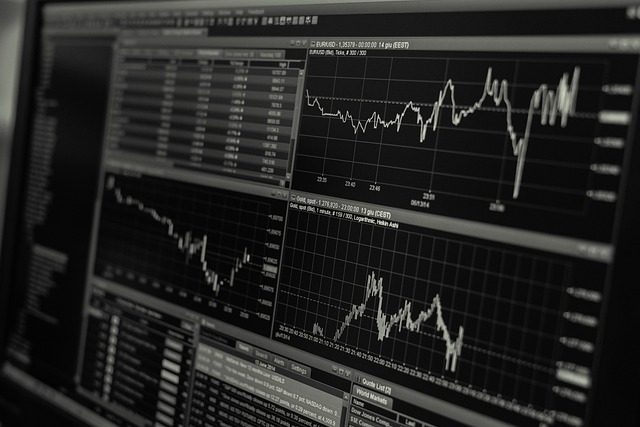How Much Is the Trading Fee in Binance? An In-Depth Analysis
Author: Jameson Richman Expert
Published On: 2025-10-02
Prepared by Jameson Richman and our team of experts with over a decade of experience in cryptocurrency and digital asset analysis. Learn more about us.
The trading fee in Binance is a crucial element that directly influences the profitability of your cryptocurrency trading activities. While market analysis, technical strategies, and research often dominate traders’ attention, understanding the intricacies of Binance’s fee structure can be equally decisive in long-term success. Cryptocurrency trading involves a spectrum of costs—including spreads, withdrawal fees, financing charges, platform-specific transaction fees, and more—and among these, trading fees are predictable components that significantly impact your net gains or losses. An in-depth comprehension of Binance’s fee architecture—including tiered discounts, fee reduction strategies, and the role of Binance Coin (BNB)—can help traders optimize costs, enhance efficiency, and maximize returns. Drawing from extensive industry insights, this article provides a comprehensive analysis of Binance’s fee system, comparisons with other exchanges, and strategic approaches to minimizing costs effectively.

Understanding Binance's Tiered Fee Structure: A Detailed Breakdown
Binance’s fee structure is designed to reward high-volume traders and those holding BNB, employing a sophisticated tiered model that promotes increased activity and BNB ecosystem engagement. At its core, Binance offers one of the most competitive standard trading fees in the industry, starting at just 0.1% for both maker and taker orders, making it attractive for traders of all levels.
The fee differentiation primarily hinges on order types:
- Maker Fees: These are typically lower—around 0.09%—and are applied when traders place limit orders that add liquidity to the order book. Such orders help narrow spreads and promote market stability, which benefits all participants by reducing trading costs.
- Taker Fees: Usually set at 0.1%, these fees are applied when executing market orders that match existing orders, removing liquidity from the order book and executing trades immediately.
A key feature in Binance's fee model is the option to pay fees using Binance Coin (BNB). By opting for BNB as the fee currency, traders can benefit from discounts up to 25%. For example, the standard 0.1% fee can be reduced to approximately 0.075%. This incentive not only makes trading more cost-effective but also encourages BNB utilization within the Binance ecosystem, fostering token demand and utility.
It’s vital to note that Binance periodically updates its fee discounts and promotional offers. Staying informed about these adjustments can lead to ongoing cost savings, especially during promotional periods or special campaigns.
Fee Tiers and Their Advantages for Different Trader Profiles
Binance’s tiered fee system is structured to incentivize increased trading volume and BNB holdings, rewarding active and institutional traders with reduced fees. Your classification depends on your 30-day trading volume and your BNB holdings, with higher tiers unlocking lower fees and additional benefits.
Here’s a detailed overview of the tiers:
- Basic Tier: For traders with less than 50 BTC in monthly trading volume and BNB holdings below 50 BNB, the standard fee of 0.1% applies for both maker and taker trades.
- Intermediate Tiers: When your 30-day trading volume exceeds 100 BTC or you hold BNB balances over certain thresholds (e.g., 100-500 BNB), fees decrease progressively—down to approximately 0.09%, 0.075%, or even 0.02% for top tiers.
- High-Volume and Institutional Tiers: Traders executing over 1,000 BTC in monthly volume or holding substantial BNB balances (e.g., over 500 BNB) can access the lowest fee rates—around 0.02% or less. Binance offers specialized programs and enterprise solutions with customized fee arrangements for institutional clients.
Strategically increasing your trading volume or BNB holdings can significantly reduce effective trading costs. For instance, high-frequency traders or professional institutional investors benefit from these lower fee tiers, which directly improve net profitability. Regularly reviewing your tier status—especially if your trading activity fluctuates—is essential to maximize cost savings and leverage the best possible fee structure.
Additional Fees and Hidden Costs: An Advanced Perspective
While primary trading fees are well-known, seasoned traders must also consider ancillary costs that can erode profits if not properly managed:
- Withdrawal Fees: These vary by cryptocurrency—Bitcoin withdrawals, for example, cost around 0.0005 BTC, but fluctuate with network congestion. Ethereum and other tokens have their own dynamic fee schedules, often spiking during high network activity, leading to unexpectedly high withdrawal costs.
- Margin Trading Costs: Borrowing funds for margin trading incurs interest charges, typically calculated hourly or daily. Prolonged leveraged positions, especially in volatile markets, can accumulate significant interest, impacting overall profitability.
- Futures Trading Fees: Binance Futures charges starting at 0.02% for makers and 0.04% for takers, with potential rebates for makers. These fees can be further reduced using BNB discounts or high-volume tiers. Additional costs such as funding rates—periodic payments between longs and shorts—also influence overall trading expenses.
- Token Conversion and Internal Swaps: Converting assets within Binance’s ecosystem or swapping tokens can involve minor embedded fees, often through slight differences in exchange rates or spreads, which accumulate over time.
Active traders should adopt a comprehensive approach to cost management—monitoring blockchain network fees, avoiding unnecessary withdrawals, and utilizing Binance’s fee reduction tools. For instance, during periods of high network congestion, delaying withdrawals or batching multiple transactions can minimize costs.

Comparative Analysis: Binance vs. Other Leading Exchanges
Understanding how Binance’s fee structure stacks up against other major platforms helps traders make informed decisions:
- Mexc: Offers a flat trading fee of 0.2%, which can be reduced to 0.1% with BNB discounts or referral bonuses. Occasional zero-fee trading events make it attractive for cost-sensitive traders.
- Bitget: Focused on derivatives, with fees starting at 0.02% for makers and 0.04% for takers, with additional discounts based on trading volume and BNB usage. Its tiered structure is comparable to Binance’s, often appealing to high-volume traders.
- Bybit: Specializes in derivatives trading, with a taker fee of 0.075% and a maker rebate of -0.025%. Its tiered system rewards high-volume traders and offers significant advantages for professional traders who prioritize derivatives.
While these exchanges are competitive, Binance’s extensive ecosystem—including spot trading, futures, options, staking, savings, and lending—combined with aggressive fee discounts and promotional campaigns, often presents a strategic advantage, especially for traders who operate across multiple products or execute high-volume trades.
Effective Strategies to Minimize Binance Trading Fees
Cost optimization is essential for sustainable trading success. Here are proven strategies:
- Use BNB for Fee Payment: Always opt to pay trading fees with BNB—this can secure discounts up to 25%, leading to significant savings over time. Automating this choice ensures consistent cost reduction.
- Increase Trading Volume and BNB Holdings: Moving into higher fee tiers by boosting trading activity or BNB balances decreases per-trade costs. Consider consolidating trading sessions or participating in high-volume periods to accelerate tier advancement.
- Participate in Promotions and Contests: Binance frequently runs promotional events, including zero-fee days or reduced-fee trading pairs. Staying engaged and following official channels can unlock these savings opportunities.
- Leverage Referral and Cashback Programs: Inviting others to Binance via referral links can earn rebates or reduce your overall trading expenses, creating a community-driven cost-saving loop.
- Utilize Fee Rebate and Incentive Programs: Some advanced account types or specific trading pairs offer cashback or rebate incentives—maximizing these benefits can further reduce trading costs.
Personal Insights and Lessons Learned
From years of active Binance trading, I’ve observed that even small percentage differences in fees have a substantial impact when scaled across thousands of trades. Early on, I underestimated the power of fee optimization, but by increasing BNB holdings, leveraging promotional periods, and monitoring tier statuses, I managed to reduce my effective fees to as low as 0.02%. These incremental improvements compound, significantly boosting overall profitability. Discipline in fee management—combined with continuous learning about Binance’s evolving fee policies—is a key competitive advantage for consistent success in crypto trading.

Why Continuous Fee Monitoring Is Critical for Long-Term Success
Overlooking fee management can erode profits, especially for high-frequency or leveraged traders. Even a 0.05% difference in fees, compounded over hundreds or thousands of trades annually, can translate into thousands of dollars lost or gained. Therefore, traders should:
- Regularly review and adjust fee tiers based on recent trading activity and BNB holdings.
- Stay updated on Binance’s promotional campaigns and fee reductions, leveraging these opportunities promptly.
- Incorporate fee considerations into overall trading, risk management, and portfolio planning.
In conclusion, mastering Binance’s fee structure and actively managing costs are essential for building a resilient, profitable trading setup. Both novice and experienced traders can benefit immensely from strategic fee optimization—ultimately enabling more capital to be deployed directly into trading positions rather than lost to unnecessary expenses.
For more advanced insights, consider exploring resources such as TradingView API utilization, technical analysis techniques, and emerging cryptocurrencies like Pepe, which show significant growth potential in 2025. Staying educated and disciplined in fee management remains a cornerstone of sustainable crypto trading success.
Remember: Effective fee management combined with informed decision-making is your key to maximizing profitability. Stay strategic, stay informed, and happy trading!